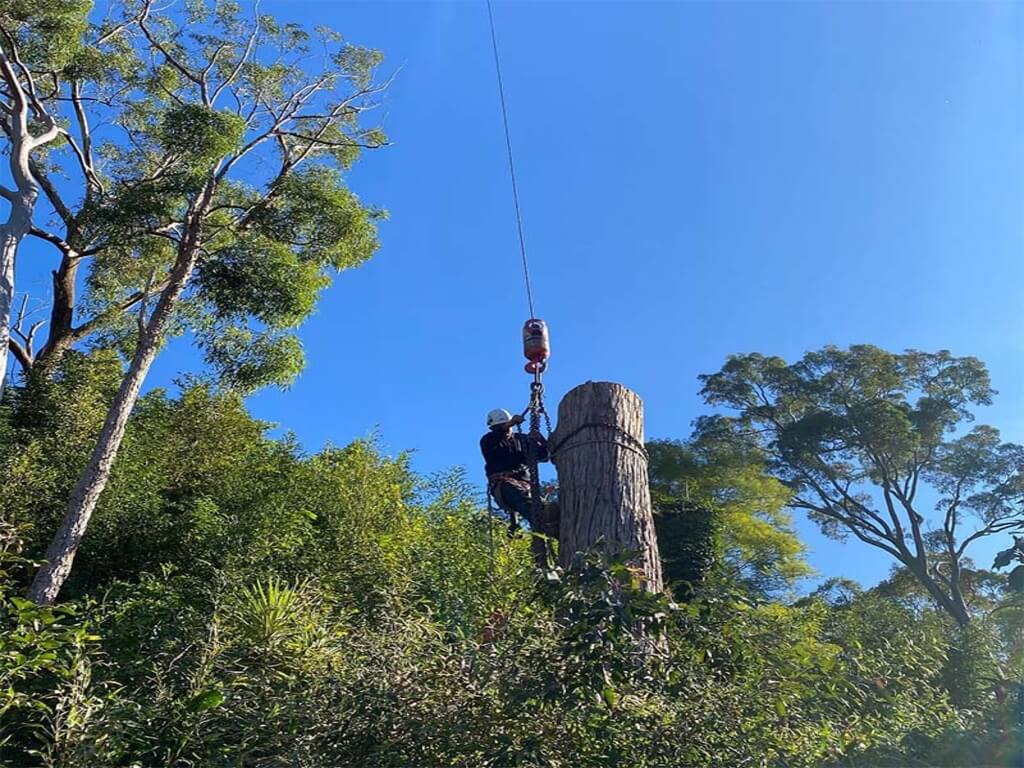Why Tree Pruning Matters: A Deep Dive into the Benefits for Your Property
Tree pruning is an essential aspect of maintaining the health and beauty of your property. It involves the careful removal of specific branches and limbs to encourage overall tree growth and enhance its structural integrity. Understanding the basics of tree pruning is crucial in ensuring that your property thrives and remains safe and aesthetically pleasing.
Understanding the Basics of Tree Pruning
What is tree pruning, you may wonder? Well, tree pruning Sydney is the process of selectively removing certain branches or stems, whether dead, damaged, or diseased. Additionally, pruning can also involve shaping the tree, including controlling its size and improving its overall appearance. It is crucial to bear in mind that tree pruning must be done at the right time and executed correctly to avoid causing harm to the tree.
The science behind tree pruning is quite fascinating. When certain branches are removed, the tree allocates its resources more efficiently to the remaining branches. This allows for better air circulation and sunlight penetration throughout the tree canopy, reducing the risk of diseases and promoting overall tree health. Pruning also helps redirect growth, ensuring that the tree’s structure is strong and stable.
One important aspect to consider when pruning a tree is understanding the different types of cuts that can be made. There are three main types of cuts: the thinning cut, the heading cut, and the reduction cut. Each type of cut serves a specific purpose and should be used with care.
The thinning cut involves removing an entire branch at its point of origin, which can help improve the tree’s structure and allow more light to reach the lower branches. This type of cut is often used to thin out the crown of the tree and reduce its density.

The heading cut, on the other hand, involves removing a portion of a branch, typically cutting it back to a bud or lateral branch. This type of cut is commonly used to control the size and shape of the tree, encouraging new growth in a specific direction.
The reduction cut is used to reduce the size of a tree or a specific branch. It involves cutting back a branch to a lateral branch or a bud, reducing its length and overall weight. This type of cut is often used when a tree has outgrown its space or poses a risk to nearby structures.
Another important aspect of tree pruning is understanding the timing. Different trees have different pruning requirements, and it is essential to prune them at the right time to maximize their health and minimize the risk of damage. For example, deciduous trees are best pruned during their dormant season, typically in late winter or early spring, while evergreen trees can be pruned throughout the year.
It is also crucial to consider the weather conditions when planning to prune a tree. Pruning during extreme heat or cold can stress the tree and hinder its ability to recover. Therefore, it is advisable to choose a time when the weather is mild and the tree is in a stable condition.
In conclusion, tree pruning is a vital practice that helps maintain the health, structure, and appearance of trees. By selectively removing certain branches and shaping the tree, pruning promotes better air circulation, sunlight penetration, and overall tree health. Understanding the different types of cuts and the appropriate timing for pruning is essential to ensure the success of the process and avoid causing harm to the tree. So, the next time you see a beautifully pruned tree, remember the science and care that went into its maintenance.
The Importance of Regular Tree Pruning
Regular tree pruning offers numerous benefits that go beyond mere aesthetics. Firstly, it plays a pivotal role in enhancing tree health. By removing dead or diseased branches, pruning prevents the spread of infections and diseases throughout the tree, ensuring its vitality and longevity.
When dead or diseased branches are left unattended, they become a breeding ground for harmful pests and pathogens. These pests and pathogens can quickly spread to other parts of the tree, causing further damage and potentially leading to its demise. Regular pruning helps to eliminate these potential threats, keeping the tree healthy and strong.
Moreover, pruning promotes growth and structure. By selectively removing branches, the tree is encouraged to grow in a particular direction, resulting in a more balanced and visually appealing shape. This is especially important for trees that are grown for ornamental purposes, as their aesthetic appeal is a significant factor in their overall value.
Additionally, pruning helps to maintain the structural integrity of the tree. Over time, trees can develop weak branch unions, where two branches meet but are not firmly attached. These weak unions are prone to failure, especially during storms or high winds. By identifying and removing these weak branches through pruning, the risk of limb failure is significantly reduced, ensuring the safety of both the tree and its surroundings.
Furthermore, regular pruning can also improve the overall air circulation within the tree’s canopy. When branches are densely packed, air movement is restricted, creating a favorable environment for the growth of fungal diseases. By selectively thinning out the branches, pruning allows for better air circulation, reducing the risk of fungal infections and promoting a healthier environment for the tree.

In conclusion, regular tree pruning is not only essential for maintaining the aesthetic appeal of trees but also for ensuring their health, longevity, and structural integrity. By removing dead or diseased branches, promoting growth and structure, and improving air circulation, pruning plays a vital role in keeping trees strong and resilient. Therefore, it is crucial to incorporate regular tree pruning into any comprehensive tree care plan.
Tree Pruning and Property Value
Aside from the health benefits, tree pruning significantly contributes to the overall value of your property. One advantage is the boost it provides to the aesthetic appeal of your landscape. Well-maintained and properly pruned trees create an inviting outdoor space, increasing the overall attractiveness of your property.
When it comes to the aesthetic appeal of your property, the importance of tree pruning cannot be overstated. Picture this: a well-manicured lawn with neatly trimmed hedges and colorful flowers, but with overgrown and unruly trees. The imbalance created by neglected trees can detract from the overall beauty of your landscape. However, by investing in regular tree pruning, you can ensure that your property maintains a harmonious and visually pleasing environment.
Not only does tree pruning enhance the visual appeal of your property, but it can also have a positive impact on your property’s market value. Prospective buyers are often attracted to properties with well-maintained trees, considering them as valuable assets. Beautifully pruned trees can be a selling point, setting your property apart from others in the market.
Imagine a potential buyer driving through a neighborhood, searching for their dream home. As they pass by your property, their attention is immediately drawn to the majestic oak tree standing tall in your front yard, its branches expertly pruned to showcase its natural beauty. The buyer is captivated by the sight and envisions themselves enjoying the shade it provides during hot summer days. In that moment, the value of your property increases in their eyes.
Moreover, tree pruning not only enhances the visual appeal but also promotes the overall health and longevity of your trees. Regular pruning helps to remove dead or diseased branches, reducing the risk of tree diseases and pests. By maintaining the health of your trees, you are ensuring their long-term survival and preventing potential hazards, such as falling branches, which could negatively impact your property value.
It is important to note that tree pruning should be done by professionals who have the knowledge and expertise to assess the specific needs of each tree. Improper pruning techniques can cause irreversible damage to the tree and diminish its aesthetic and economic value. Therefore, it is advisable to hire certified arborists who can provide the necessary care and attention to your trees.
In conclusion, tree pruning not only contributes to the health and longevity of your trees but also enhances the aesthetic appeal and market value of your property. By investing in regular tree pruning, you are creating an inviting outdoor space and positioning your property as a desirable asset in the real estate market. So, why wait? Start reaping the benefits of tree pruning today!

Safety Benefits of Tree Pruning
Tree pruning not only enhances the aesthetic appeal of your landscape but also serves crucial safety purposes. By removing dead and weak branches, regular pruning prevents property damage and potential hazards. Dead branches, especially during storms or heavy winds, pose a significant risk of falling and causing harm to people, buildings, or vehicles. Pruning minimizes these risks, creating a safer environment for both residents and visitors.
Moreover, pruning plays a vital role in improving visibility around your property. By reducing the density of the tree canopy, pruning allows more light to penetrate through the branches and foliage. This increased visibility is particularly important for areas near driveways, roadways, or pathways, where clear sightlines help avoid accidents and ensure the safety of pedestrians and drivers.
Another safety benefit of tree pruning is the prevention of potential electrical hazards. Overgrown branches can come into contact with power lines, increasing the risk of power outages, electrical fires, and even electrocution. Regular pruning helps maintain a safe distance between trees and power lines, reducing the chances of such incidents.
In addition to these immediate safety benefits, tree pruning also contributes to the long-term health and stability of trees. By removing diseased or damaged branches, pruning prevents the spread of infections and promotes overall tree vigor. This, in turn, reduces the likelihood of tree failure and falling branches, ensuring the safety of your property and those around it.
Furthermore, proper pruning techniques can help shape the growth of trees, directing their branches away from structures, such as roofs or windows. By maintaining a safe distance between trees and buildings, pruning minimizes the risk of structural damage caused by branches rubbing against surfaces or falling onto roofs during storms.
It is important to note that tree pruning should be carried out by trained professionals who have the knowledge and expertise to assess the condition of the tree and make appropriate pruning cuts. Improper pruning techniques can weaken the tree, making it more susceptible to disease, pests, and structural failure.
In conclusion, tree pruning offers numerous safety benefits, including the prevention of property damage, improvement of visibility, reduction of electrical hazards, promotion of tree health, and mitigation of structural risks. By investing in regular tree pruning, you can create a safer environment for yourself, your loved ones, and your property.
Environmental Impact of Tree Pruning
When it comes to the environment, tree pruning has its own set of benefits. Pruned trees provide better habitats for local wildlife, including birds and squirrels. The increase in sunlight and airflow within the tree canopy stimulates the growth of understory plants, creating a thriving ecosystem within your property.
Beyond supporting wildlife, tree pruning contributes to a healthier environment by improving air quality. Pruning allows for the removal of dead or diseased branches, which can harbor pests and diseases. By eliminating these potentially harmful elements, you help maintain a cleaner and healthier atmosphere.
In conclusion,
tree pruning offers a multitude of benefits for your property. From promoting overall tree health and structure to increasing aesthetic appeal and property value, the advantages are extensive. Not to mention the safety benefits it provides by preventing property damage and reducing the risk of injury. Additionally, tree pruning plays a significant role in supporting local wildlife and maintaining a healthy environment. So, if you want to ensure that your property thrives and remains visually stunning, investing in regular tree pruning is undoubtedly a wise decision.
Related: The Ultimate Guide to Tree Pruning

